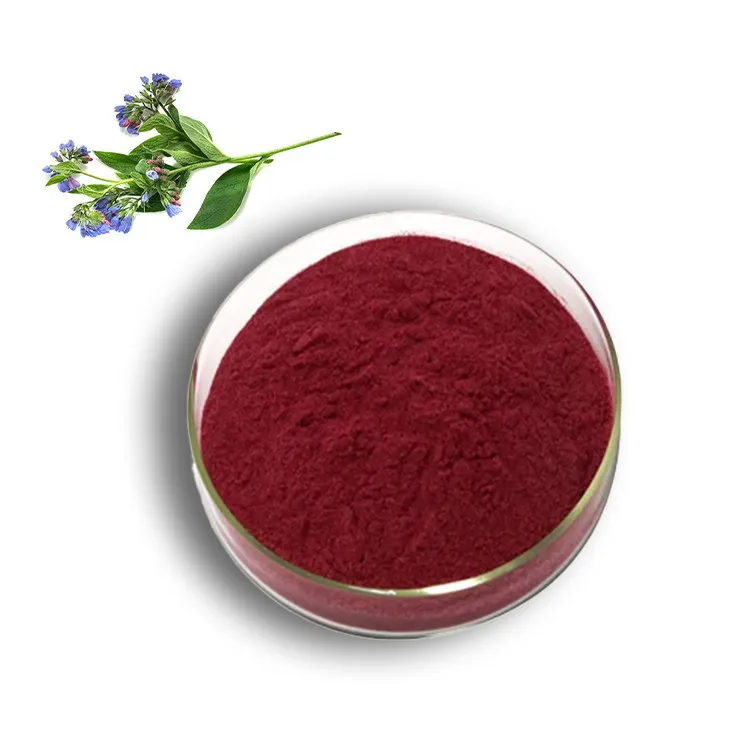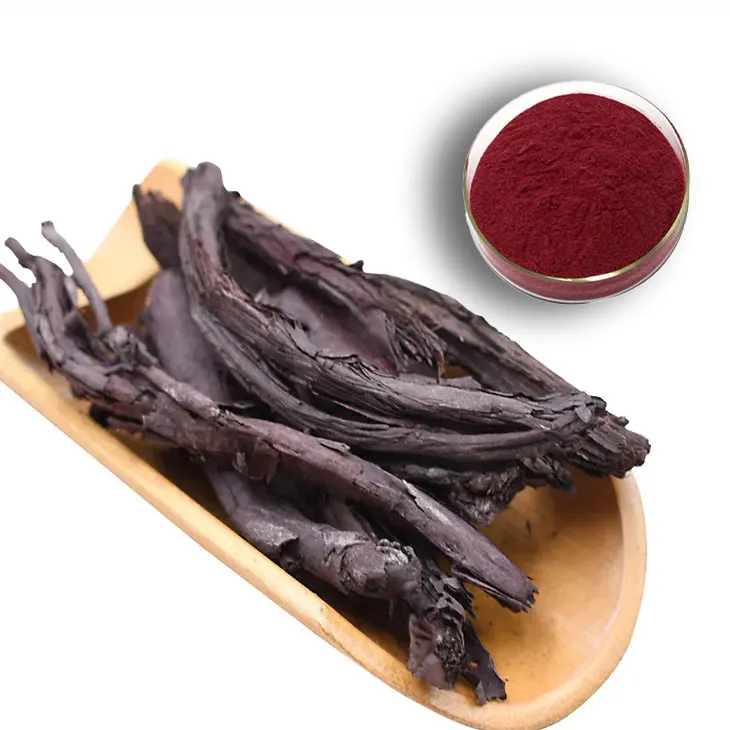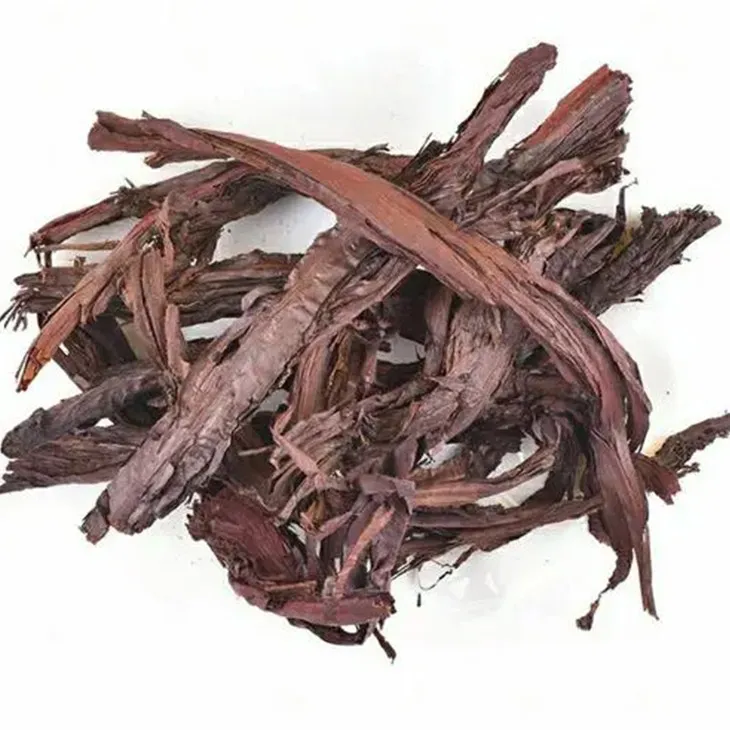- 0086-571-85302990
- sales@greenskybio.com
How to make powder with shikonin?
2024-11-26

1. Introduction to Shikonin
Shikonin is a remarkable natural compound that has been garnering significant attention in multiple fields, particularly in medicine and cosmetics. Its unique properties make it a valuable ingredient for various applications. Shikonin is known for its potential therapeutic effects, such as anti - inflammatory, antimicrobial, and antioxidant properties. In the cosmetic industry, it is often used for its skin - soothing and regenerative qualities.

2. Obtaining Shikonin
2.1 Source of Shikonin
Shikonin can be obtained from certain plants. One of the common sources is Lithospermum erythrorhizon. This plant contains shikonin in its roots, among other parts. Harvesting shikonin from plants is the first step towards making shikonin powder.
2.2 Extraction Methods
The extraction of shikonin from plant material is a crucial process. One of the most commonly used solvents for this extraction is ethanol. The process typically involves the following steps:
- First, the plant material (such as the roots of Lithospermum erythrorhizon) is finely ground. This increases the surface area of the plant material, allowing for more efficient extraction.
- The ground plant material is then soaked in ethanol. The ethanol penetrates the plant cells and dissolves the shikonin present in the cells.
- The mixture of plant material and ethanol is then allowed to stand for a certain period, usually several hours to a few days, depending on the extraction conditions. This allows sufficient time for the shikonin to be fully dissolved in the ethanol.

3. Removing the Solvent
After the extraction process, the next step is to carefully remove the solvent (ethanol in this case). This is a critical step as improper removal can affect the quality of the final shikonin product.
3.1 Evaporation under Controlled Conditions
The solvent is removed through evaporation. However, this needs to be done under controlled conditions. High temperatures should be avoided as they may cause degradation of shikonin. A low - pressure environment can be created to facilitate the evaporation process. This helps in removing the ethanol while minimizing the risk of damaging the shikonin. The evaporation process should be carried out slowly to ensure that all the solvent is removed completely. Residual solvent in the shikonin can lead to problems such as instability of the final product or potential toxicity issues.

4. Transforming Shikonin into Powder
Once the solvent has been removed, the shikonin is usually in a semi - solid or viscous state. To convert it into a powder form, two main techniques can be used: freeze - drying and spray - drying.
4.1 Freeze - Drying
- First, the shikonin sample is frozen. This freezing process helps in immobilizing the shikonin molecules in their current state.
- After freezing, the pressure is reduced. In a low - pressure environment, the frozen water (if any) present in the sample undergoes sublimation. Sublimation is the process where a solid directly turns into a gas without passing through the liquid phase. As the water sublimes, it leaves behind the dry shikonin powder.
- Freeze - drying is a gentle process that helps in preserving the integrity of the shikonin molecules. It is particularly useful when dealing with heat - sensitive compounds like shikonin.
4.2 Spray - Drying
- The shikonin solution (after solvent removal, it may be dissolved in a small amount of a suitable solvent again for this process) is atomized into fine droplets. This is usually done using a spray nozzle or a similar device.
- These fine droplets are then introduced into a hot air stream. The hot air rapidly dries the droplets, causing the solvent (if any) to evaporate quickly and the shikonin to form a powder. The key advantage of spray - drying is its high - speed drying process, which can be very efficient for large - scale production.
- However, care must be taken to control the temperature of the hot air stream. If the temperature is too high, it may cause thermal degradation of the shikonin.
5. Safety Considerations
During the entire process of making shikonin powder, strict safety measures need to be followed.
5.1 Toxicity of Shikonin
Shikonin can be toxic in large amounts. Therefore, proper handling and protection are essential. Workers involved in the extraction, purification, and powder - making processes should wear appropriate personal protective equipment (PPE), such as gloves and masks. Care should also be taken to avoid inhalation or ingestion of shikonin during the process.
5.2 Flammability of Solvents
As mentioned earlier, solvents like ethanol are flammable. Any operation involving the use of solvents should be carried out in a well - ventilated area away from sources of ignition. Fire - extinguishing equipment should be readily available in the vicinity. Storage of solvents should also be done in accordance with safety regulations to prevent fire hazards.
6. Conclusion
Making powder with shikonin involves a series of steps from obtaining the shikonin source, extraction, solvent removal, to finally converting it into powder form. Each step requires careful attention to detail and strict adherence to safety measures. The potential applications of shikonin powder in medicine, cosmetics, and other fields make it a valuable product. However, due to its toxicity and the use of flammable solvents in the process, safety should always be a top priority in its production.
FAQ:
What are the common sources of shikonin?
One of the common sources of shikonin is the plant Lithospermum erythrorhizon. Through extraction from this plant, shikonin can be obtained.
Why is ethanol used in the extraction of shikonin?
Ethanol is used as a solvent in the extraction of shikonin because it can effectively dissolve shikonin out of the plant material.
What are the advantages of freeze - drying in making shikonin powder?
Freeze - drying has the advantage of preserving the properties of shikonin well. By freezing the sample first and then allowing the frozen water (if any) to sublimate under reduced pressure, it can produce dry shikonin powder without causing much damage to the compound.
How does spray - drying work in the process of making shikonin powder?
Spray - drying works by atomizing the shikonin solution into fine droplets. These droplets are then rapidly dried in a hot air stream, which leads to the formation of powder.
What safety measures should be taken during the process of making shikonin powder?
During the process, strict safety measures should be followed. Since shikonin can be toxic in large amounts, proper handling to avoid overexposure is necessary. Also, as some solvents like ethanol are flammable, precautions should be taken to prevent fires, such as avoiding open flames and static electricity.
Related literature
- Title: Shikonin: Properties and Applications in Modern Medicine"
- Title: "The Role of Shikonin in Cosmetics: A Comprehensive Review"
- Title: "Extraction and Purification of Shikonin: New Methodologies"
- ▶ Hesperidin
- ▶ Citrus Bioflavonoids
- ▶ Plant Extract
- ▶ lycopene
- ▶ Diosmin
- ▶ Grape seed extract
- ▶ Sea buckthorn Juice Powder
- ▶ Fruit Juice Powder
- ▶ Hops Extract
- ▶ Artichoke Extract
- ▶ Mushroom extract
- ▶ Astaxanthin
- ▶ Green Tea Extract
- ▶ Curcumin
- ▶ Horse Chestnut Extract
- ▶ Other Product
- ▶ Boswellia Serrata Extract
- ▶ Resveratrol
- ▶ Marigold Extract
- ▶ Grape Leaf Extract
- ▶ New Product
- ▶ Aminolevulinic acid
- ▶ Cranberry Extract
- ▶ Red Yeast Rice
- ▶ Red Wine Extract
-
Hawthorn Extract
2024-11-26
-
Tongkat Ali Extract
2024-11-26
-
Moringa powder
2024-11-26
-
Phellodendron Extract
2024-11-26
-
Aminolevulinic acid
2024-11-26
-
Resveratrol extract
2024-11-26
-
Passionflower Extract
2024-11-26
-
Artichoke Leaf Extract
2024-11-26
-
Grape Leaf Extract
2024-11-26
-
Gynostemma pentaphyllum extract
2024-11-26





















